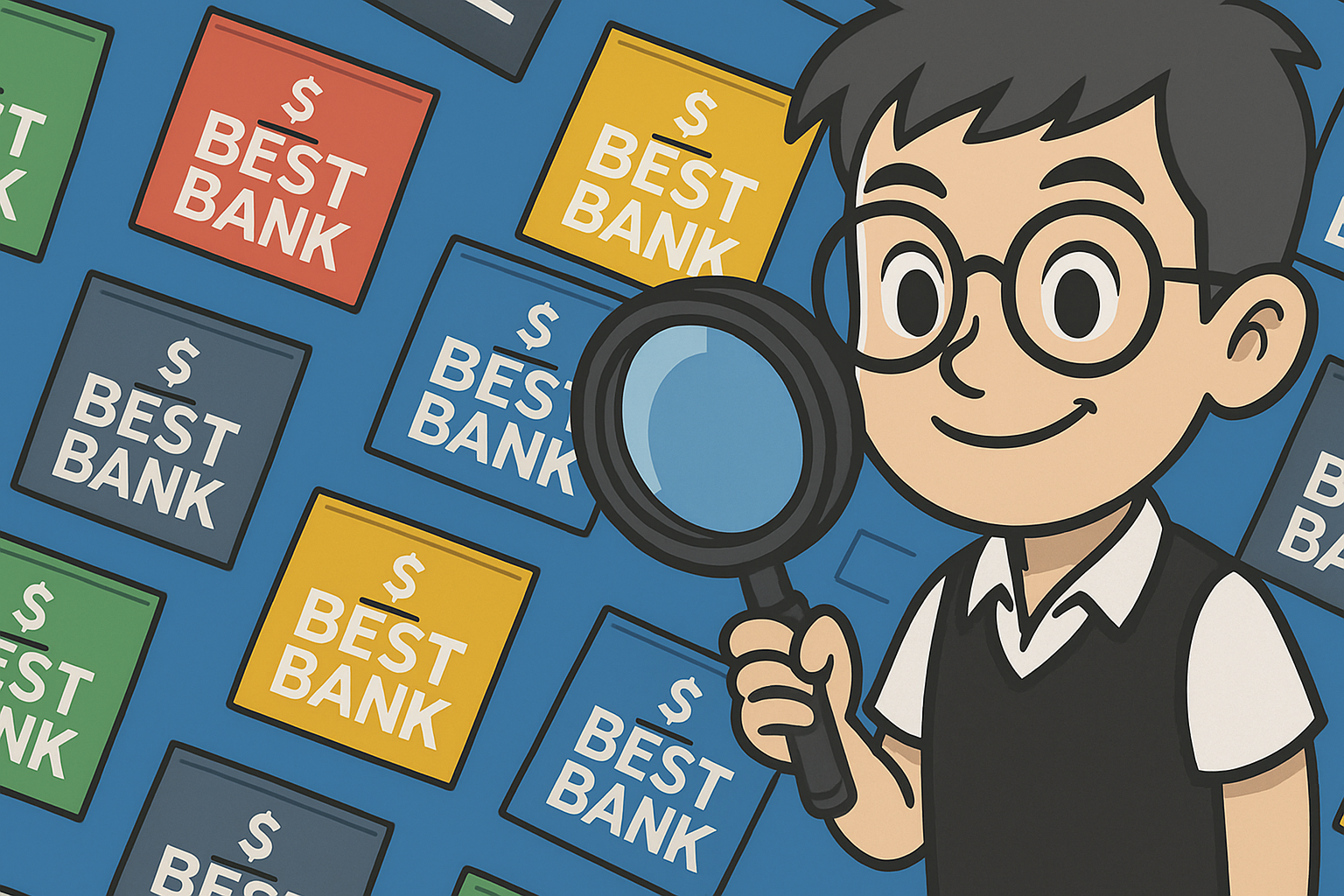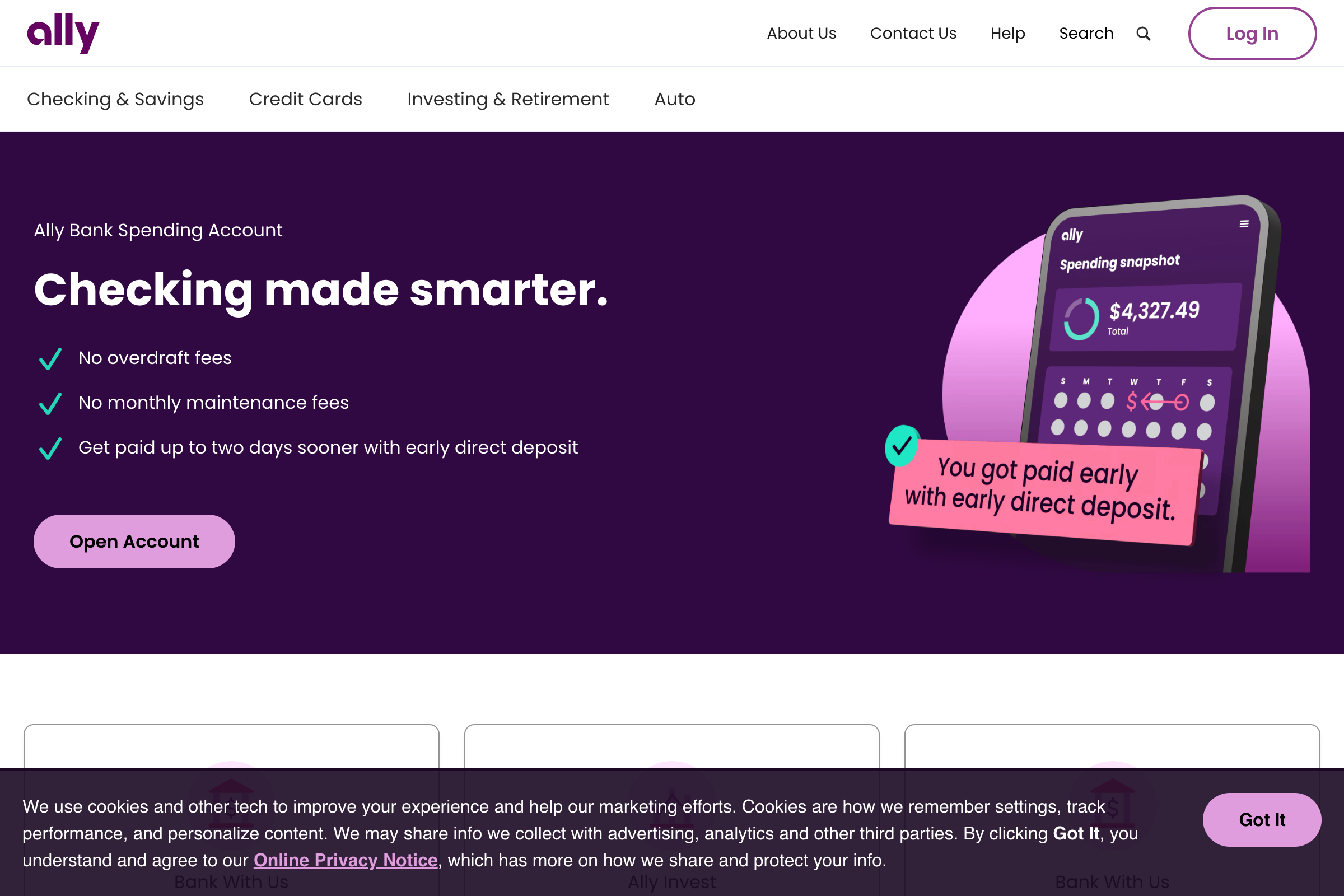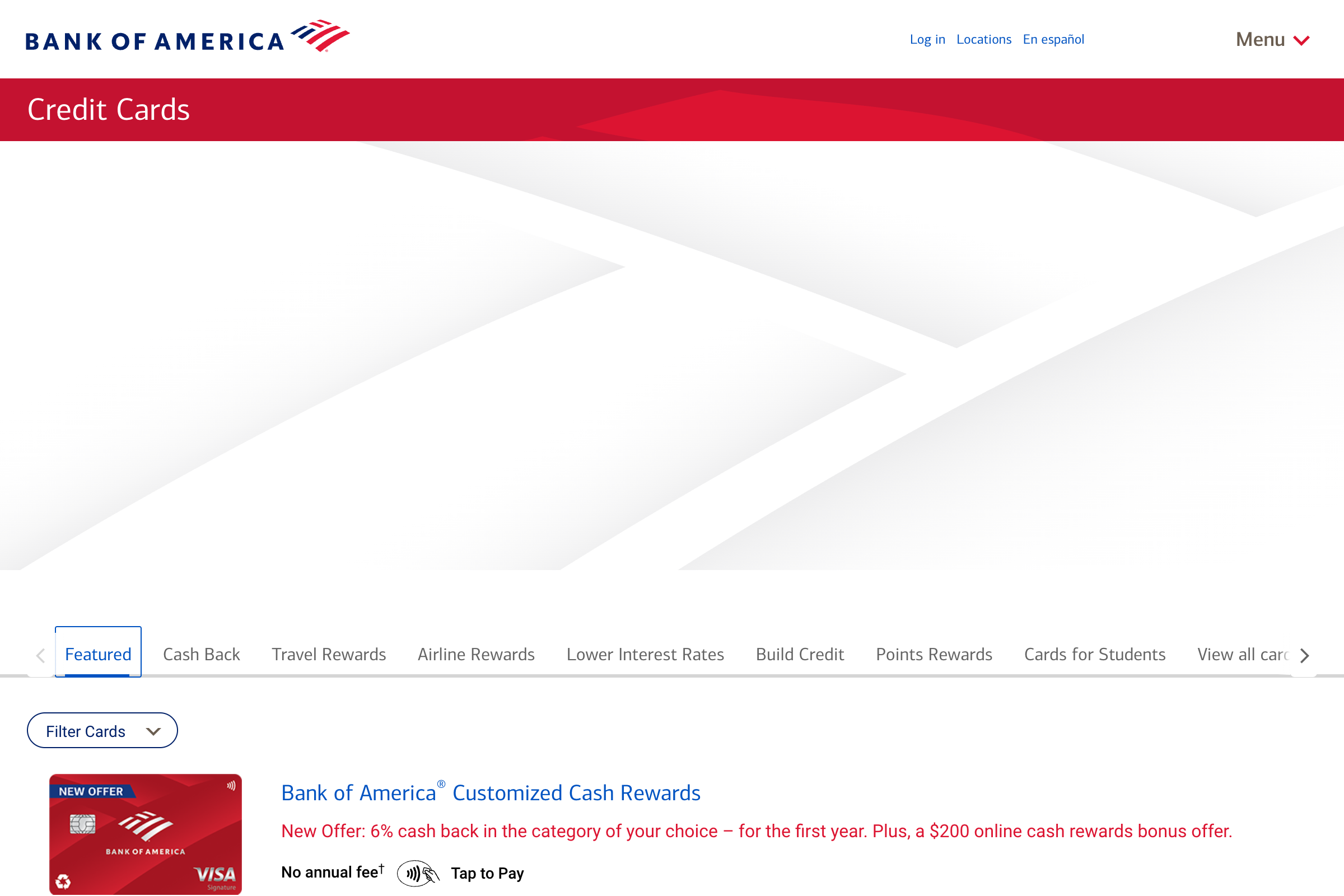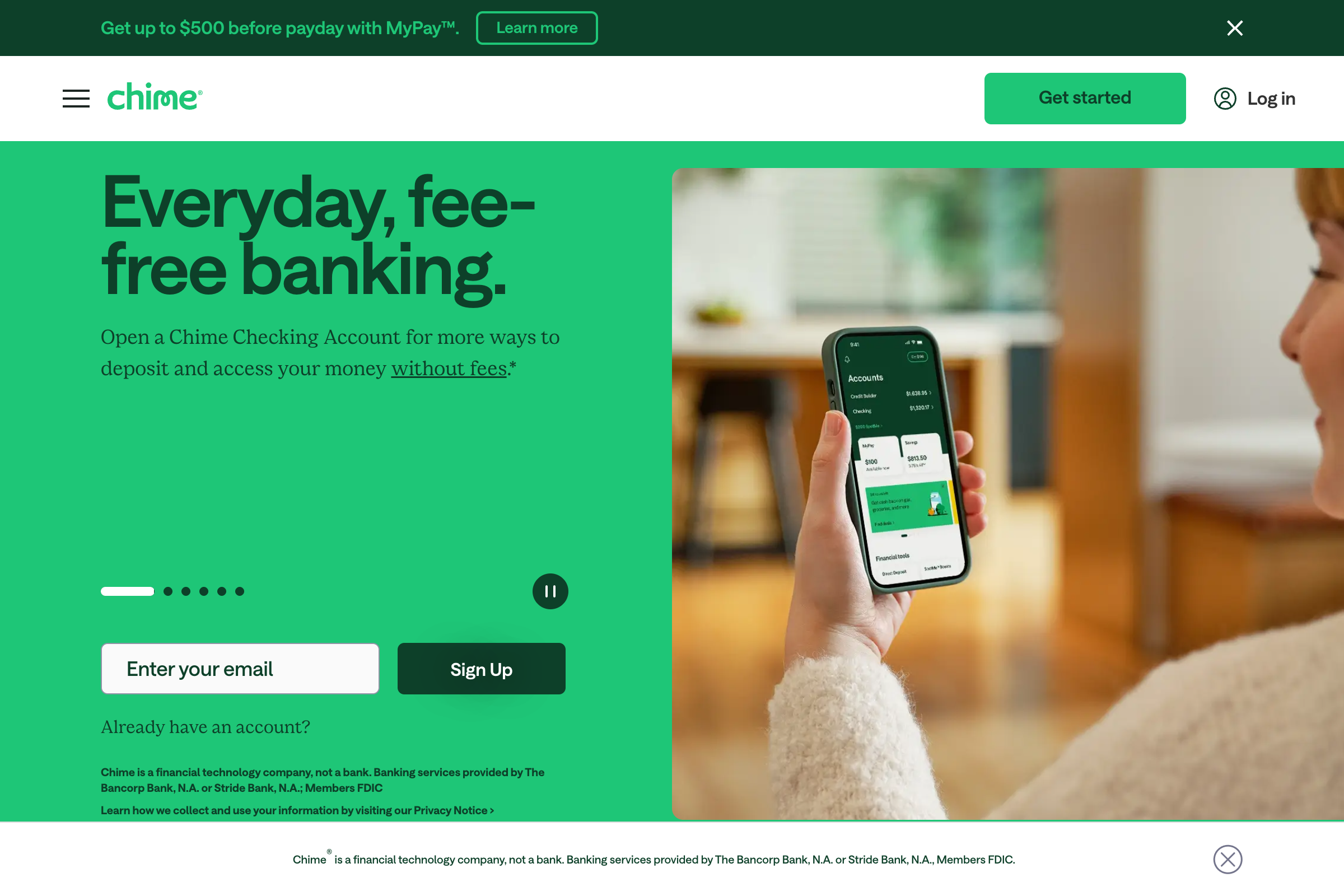
Key Takeaways
- Digital banks typically offer 2-5x higher interest rates than traditional banks
- Traditional banks provide more comprehensive services including lending and investment options
- 80% of banking customers now use mobile apps as their primary banking method
- Digital banks save customers an average of $200-400 annually in fees
- Hybrid banks like Capital One offer the best of both worlds
Introduction: The Banking Revolution of 2025
The banking landscape has fundamentally transformed, with digital-first institutions challenging traditional brick-and-mortar banks on every front. According to Federal Reserve data, 89% of adults now use mobile banking, while only 23% visited a bank branch in the past year. This shift represents more than convenience—it's reshaping how we think about banking relationships, fees, and services.
Digital banks like Chime, Ally, and SoFi have gained millions of customers by offering higher interest rates, lower fees, and superior mobile experiences. Meanwhile, traditional powerhouses like Chase, Bank of America, and Wells Fargo are investing billions in digital transformation to remain competitive. This comprehensive comparison examines both banking models in 2025, analyzing their strengths, weaknesses, and best use cases. For optimizing your banking choice with rewards, explore our credit card reviews and business banking solutions.
Traditional Banking Giants: Comprehensive Service Leaders

1. Chase Bank - Best Overall Traditional Banking
Chase Bank remains America's largest bank by assets, serving over 66 million households with a comprehensive suite of financial services. The bank combines an extensive branch network with advanced digital capabilities, making it ideal for customers who value both online convenience and in-person service. According to Chase's annual report, customer satisfaction scores increased 15% in 2024 following major digital infrastructure investments.
Key Traditional Banking Features:
- 4,700+ branches and 15,000+ ATMs nationwide
- Comprehensive business banking and lending services
- Investment and wealth management platforms
- Advanced fraud protection and security features
- 24/7 customer service with specialist departments
- Integration with Chase credit cards and rewards programs
Monthly Fees: $12-25 (waivable with direct deposit or minimum balance)

2. Bank of America - Largest Branch Network
Bank of America operates the nation's second-largest banking network with over 3,900 branches and strong digital integration. The bank's Preferred Rewards program provides substantial benefits for customers who maintain higher balances across multiple accounts. Bank of America research shows that Preferred Rewards members save an average of $480 annually through fee waivers and bonus rewards.
Key Network Advantages:
- 3,900+ branches with extended weekend hours
- Preferred Rewards program with tiered benefits
- Comprehensive mortgage and auto lending
- Merrill Edge investment platform integration
- Small business specialist support
- Advanced mobile check deposit and bill pay
Monthly Fees: $12-25 (waivable with qualifying relationships)
3. Wells Fargo - Extensive Regional Coverage
Wells Fargo maintains one of the largest branch networks in the United States, particularly strong in western and midwest markets. Despite past challenges, the bank has invested heavily in digital transformation and customer service improvements.
Digital Banking Leaders: Innovation and Value

1. Chime - Most Popular Digital Bank
Chime has revolutionized digital banking with over 15 million account holders, offering fee-free banking, early paycheck access, and automatic savings features. The platform's mobile-first approach and no-fee structure appeal particularly to younger consumers and those avoiding traditional banking fees. According to Chime's member report, users save an average of $240 annually compared to traditional bank customers.
Key Digital Banking Features:
- No monthly fees, overdraft fees, or minimum balance requirements
- Get paid up to 2 days early with direct deposit
- Automatic round-up savings with Smart Save
- 60,000+ fee-free ATMs through Allpoint and MoneyPass
- SpotMe overdraft protection up to $200
- Real-time transaction notifications and spending insights
Monthly Fees: $0 (completely fee-free banking)

2. Discover Bank - Highest Online Savings Rates
Discover Bank offers some of the most competitive interest rates in the market, with online savings accounts typically earning 10-15x more than traditional bank rates. The bank's cashback debit card and exceptional customer service make it a strong choice for rate-focused customers. Discover's rate analysis shows their savings accounts have consistently outperformed 95% of traditional banks over the past five years.
Key Rate Advantages:
- High-yield online savings with 4.5%+ APY
- Cashback debit card earning 1% on purchases up to $3,000/month
- No minimum balance requirements or monthly fees
- Award-winning 24/7 U.S.-based customer service
- Free standard checks and no ATM fees worldwide
- Mobile app with advanced budgeting tools
Monthly Fees: $0 with competitive rates
Hybrid Banking Models: Best of Both Worlds

1. Capital One - Leading Digital-First Traditional Bank
Capital One successfully bridges traditional and digital banking with cafe-style branches, competitive online rates, and innovative technology. The bank's 360 Banking platform offers high-yield savings while maintaining comprehensive banking services. According to Capital One's digital banking report, 95% of customer interactions now occur digitally, yet branch satisfaction scores remain industry-leading.
Key Hybrid Features:
- High-yield 360 Performance Savings with 4.3% APY
- Cafe-style branches with extended hours and free WiFi
- No fees for online banking accounts
- Integration with Capital One credit cards and rewards
- Advanced mobile app with virtual assistant Eno
- Comprehensive business banking and lending services
Monthly Fees: $0 for 360 accounts
2. Ally Bank - Online Banking Pioneer
Ally Bank pioneered the high-yield online banking model and continues to lead with competitive rates, comprehensive services, and excellent customer satisfaction. The bank offers checking, savings, CDs, and investment services entirely online.
Digital vs Traditional Banking Comparison
| Feature | Digital Banks | Traditional Banks | Hybrid Banks |
|---|---|---|---|
| Interest Rates | 4.0-5.0% APY | 0.01-0.5% APY | 3.5-4.5% APY |
| Monthly Fees | $0 | $12-25 | $0-12 |
| Branch Access | None | Extensive | Limited |
| ATM Network | Large partnerships | Proprietary + partners | Mixed approach |
| Customer Service | Chat/phone only | Multiple channels | Digital + limited in-person |
| Business Services | Limited | Comprehensive | Moderate |
| Lending Options | Basic | Full spectrum | Moderate to full |
Fee Structure Analysis: Where Your Money Goes
Understanding fee structures is crucial for choosing the right banking model:
Digital Bank Fee Advantages
- Monthly maintenance: $0 across all major digital banks
- Overdraft fees: Many offer overdraft protection or low fees ($0-15)
- ATM fees: Extensive fee-free networks or reimbursements
- Wire transfers: Often free or low-cost compared to traditional banks
- Check deposits: Free mobile check deposit with no limits
Traditional Bank Fee Structures
- Monthly maintenance: $12-25 (often waivable with direct deposit)
- Overdraft fees: $35-39 per occurrence
- ATM fees: $2.50+ for out-of-network ATMs
- Wire transfers: $15-30 for domestic, $35-50 for international
- Paper statements: $5-10 monthly for mailed statements
According to Bankrate's 2025 checking account survey, the average American pays $279 annually in banking fees, with traditional bank customers paying 65% more than digital bank users.
Technology and User Experience Comparison
The digital experience often differentiates modern banking options:
Digital Bank Technology Leadership
- Mobile-first design: Apps built from scratch for smartphone use
- Real-time notifications: Instant spending alerts and transaction updates
- Advanced budgeting: AI-powered spending categorization and insights
- Quick transfers: Instant P2P payments and external transfers
- Innovative features: Early pay access, automatic savings, spending controls
Traditional Bank Digital Evolution
- Comprehensive platforms: Integration with all bank services and products
- Business tools: Advanced cash management and reporting features
- Investment integration: Seamless connection to brokerage and wealth management
- Security infrastructure: Enterprise-grade fraud protection and monitoring
- Multi-channel support: Consistent experience across digital and physical channels
J.D. Power's 2025 digital banking study shows that while digital banks lead in mobile app satisfaction (847/1000), traditional banks score higher for overall service breadth (798/1000).
Customer Service and Support Models
Service quality varies significantly between banking models:
Digital Bank Support Approach
- 24/7 digital support: Chat, email, and phone available around the clock
- Fast response times: Average chat response under 30 seconds
- Self-service tools: Comprehensive help centers and FAQ databases
- Social media support: Active customer service on Twitter and Facebook
- Community forums: Peer-to-peer help and feature discussions
Traditional Bank Service Infrastructure
- Multi-channel access: Branch, phone, online, and mobile support
- Specialist departments: Dedicated business, mortgage, and investment advisors
- In-person resolution: Complex issues handled face-to-face
- Relationship banking: Personal bankers for high-value customers
- Local market knowledge: Branch staff familiar with community needs
Security and Fraud Protection Comparison
Both banking models prioritize security, but with different approaches:
Digital Bank Security Features
- Real-time fraud monitoring with instant card blocking
- Biometric authentication (fingerprint, face recognition)
- Advanced encryption for all digital transactions
- Spending controls and merchant category blocking
- Automatic security updates and patches
Traditional Bank Security Infrastructure
- Enterprise-grade cybersecurity with dedicated teams
- Physical security for branch and ATM networks
- Comprehensive insurance and bonding protection
- Established relationships with law enforcement
- Robust backup systems and disaster recovery
Both digital and traditional banks are FDIC insured up to $250,000 per depositor, providing equal protection for your funds. FDIC data shows no difference in insurance claim resolution between digital and traditional banks.
Business Banking: Traditional Banks Still Lead
For business customers, traditional banks maintain significant advantages:
Traditional Bank Business Services
- Commercial lending: SBA loans, lines of credit, equipment financing
- Cash management: ACH processing, wire transfers, merchant services
- Treasury services: Payroll processing, tax payments, investment sweeps
- International banking: Foreign exchange, trade finance, correspondent banking
- Specialized advisors: Dedicated business bankers and industry specialists
Digital Bank Business Limitations
- Limited lending options (mostly personal loans)
- Basic business checking with fewer features
- No specialized business advisory services
- Limited international banking capabilities
- Fewer integration options with business software
For comprehensive business banking needs, traditional banks like Chase and Bank of America remain superior choices, while digital banks work well for simple business banking needs.
Interest Rates and Investment Options
Digital banks significantly outperform traditional banks on deposit rates:
Current Savings Account Rates (2025)
- Digital banks: 4.0-5.0% APY on high-yield savings
- Traditional banks: 0.01-0.5% APY on standard savings
- Hybrid banks: 3.5-4.5% APY competitive with digital leaders
- Money market accounts: Digital banks offer 4.2-4.8% vs. 0.1-1.5% traditional
- CDs: Similar rates across all bank types for promotional periods
Investment and Wealth Management
- Traditional banks: Full-service wealth management, financial advisors, complex products
- Digital banks: Limited to basic investment accounts and robo-advisors
- Hybrid banks: Online investment platforms with some advisory support
The rate difference means a $10,000 balance earns $400-500 annually at digital banks versus $1-50 at traditional banks, according to DepositAccounts.com rate tracking.
Which Banking Model Is Right for You?
Choose your banking model based on specific needs and priorities:
Choose Digital Banking If:
- You prioritize high interest rates and low fees
- You're comfortable with mobile-first banking
- You rarely need in-person banking services
- You want innovative features like early pay access
- You're looking to maximize savings account returns
- You prefer simple, straightforward banking
Choose Traditional Banking If:
- You value in-person service and branch access
- You need comprehensive business banking services
- You require complex lending or investment products
- You prefer established institutions with long track records
- You frequently use cashier's checks or notary services
- You want relationship banking with dedicated advisors
Choose Hybrid Banking If:
- You want competitive rates with some branch access
- You value both digital innovation and traditional services
- You're willing to compromise on rates for additional features
- You want the option for in-person support when needed
- You prefer banks that combine the best of both models
The Future of Banking: Trends for 2025-2026
The banking industry continues evolving rapidly:
Emerging Trends
- AI-powered banking: Personalized financial insights and automated advice
- Open banking: API-driven integration with third-party financial services
- Embedded finance: Banking services integrated into non-financial platforms
- Cryptocurrency integration: Digital asset custody and trading services
- Sustainable banking: ESG-focused products and carbon footprint tracking
Traditional Bank Adaptation
- Branch transformation into advisory centers
- Massive technology investments to match digital banks
- Partnership strategies with fintech companies
- Enhanced mobile capabilities and user experiences
- Streamlined fee structures to compete with digital banks
McKinsey research predicts that successful banks will be those that effectively combine digital efficiency with human expertise, regardless of their original model.
Conclusion: Making Your Banking Choice
The choice between digital and traditional banking isn't binary—it's about finding the right fit for your financial needs and preferences. Digital banks like Chime and Discover Bank excel at providing high-yield savings and fee-free banking, while traditional banks like Chase and Bank of America offer comprehensive services and established infrastructure.
Consider your banking habits, service requirements, and financial goals when making your decision. Many customers find success using a hybrid approach—a digital bank for high-yield savings and a traditional bank for complex services like business banking or mortgage lending. The key is understanding what each model offers and choosing based on your specific needs rather than following trends.
For optimizing your banking choice, consider pairing your accounts with rewards credit cards that complement your banking strategy. Explore our comprehensive banking reviews and credit card comparisons to build a complete financial strategy.